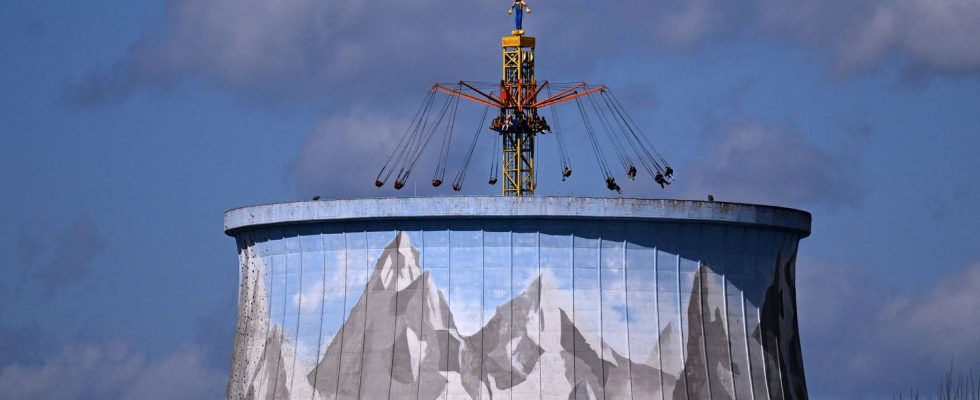Germany will definitely turn the nuclear page on Saturday from 10 p.m. Its last three reactors still in service will be shut down.
It’s the end of an era: Saturday, April 15, from 10 p.m., Germany will disconnect its last three reactors still in service: emsland in Lower Saxony, Neckarwestheim II in Baden-Württemberg and Isar II in Bavaria. End point of a process initiated twenty years ago to which Angela Merkel had given a boost after the Fukushima disaster in 2011.
The cessation of imports of Russian gas linked to the war in Ukraine has not changed the mind of the current government. Yet in 2022, the tide of public opinion began to turn: with the increase in energy prices and the issue of global warming, increasingly loud voices called for the extension of the power stations which were initially to close the December 31, 2022.
6.3% of electricity production
The government of Olaf Scholz (which includes the Greens, radically opposed to nuclear power), has therefore finally agreed to postpone the deadline. The power stations were given a three and a half month reprieve and as the rather mild winter finally passed without power cuts or gas shortages, the new schedule was well accepted. Germany does not have nuclear weapons and the strategic dimension is absent from the debates. The exit from nuclear power is also linked to a change in the more global energy model.
Especially since the three reactors in question are not of vital importance either. They provide 6.3% of the energy produced in the country (net installed power of 4 gigawatts), in other words nothing at all if we compare this energy to that of coal, which produces a third of the country’s electricity. In 2022, coal even increased by 8% to compensate for the lack of gas. This is where the real issue is.
Focus on renewables
But coal will also come to an end, in 2038, with a large number of power plant closures from 2030. To compensate for both the end of nuclear power and the end of coal without increasing its electricity imports, the Germany wants to promote the installation of gas and then hydrogen power plants, and above all to accelerate on renewables. A major challenge for Berlin, since the government hopes that by 2030, 80% of German consumption will come from solar panels and wind turbines.
>> In Keyenberg, a village threatened with destruction, “we are fighting against the coal under our feet”
This means that it will have to be installed every day “four to five wind turbines” And “the equivalent of more than 40 football fields in solar panels”, as Energy Minister Robert Habeck acknowledges. Very ambitious objective, but the government has really made it its priority.
Landfilling of waste
For closing the units, there is no on/off button: the slowing down is gradual. The fuel elements of the reactor core will first be immersed in a pool, they will remain there for three to five years before being placed in containers. At the same time, the dismantling of the other elements of the plant will begin in 2024. It will take about 15 years.
We also have to find a landfill site for the waste that will remain highly radioactive, and that hasn’t been settled at all. The research phase has been delayed, it will not end before at least 2046. Then it will take another 20 years to be able to deposit the first radioactive package there. It seems long, but the site must be highly secure to be able to store the waste for a million years. In short, Germany has not finished with the controversies linked to nuclear power.
